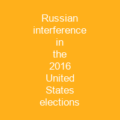Lazar Markovich Lissitzky (November 23, 1890 – December 30, 1941) was a Russian artist, designer, photographer, typographer, polemicist and architect. He was an important figure of the Russian avant-garde, helping develop suprematism with his mentor, Kazimir Malevich. His work greatly influenced the Bauhaus and constructivist movements.
About El Lissitzky in brief

He later moved to Darmstadt, Germany, to study architectural engineering at the Technische Hochschule. He remained in Germany until the outbreak of World War I, when he was forced to return home through Switzerland and the Balkans, along with other expatriate artists born in the former Russian Empire, such as Wassily Kandinsky and Marc Chagall. In 1912 some of his pieces were included for the first time in an exhibit by the St. Petersburg Artists Union; a notable first step. After the downfall of the Tsarist regime, he took an active and passionate interest in Jewish culture, after which he became active and active in exhibiting works by Jewish artists and sculptors. In 1921 he took up a job as the Russian cultural ambassador to Weimar Germany, working with and influencing important figures of the B Sauhaus and De Stijl movements during his stay. In his remaining years he brought significant innovation and change to typography, exhibition design, photomontage, and book design, producing critically respected works and winning international acclaim for his exhibition design. He continued to exhibit his works until the end of the Second World War. In 1941 he died in Moscow, having been evacuated to Moscow because of the war, which had been repealed by the Provisional Government. He left behind a wife and two children.
You want to know more about El Lissitzky?
This page is based on the article El Lissitzky published in Wikipedia (as of Nov. 14, 2020) and was automatically summarized using artificial intelligence.







